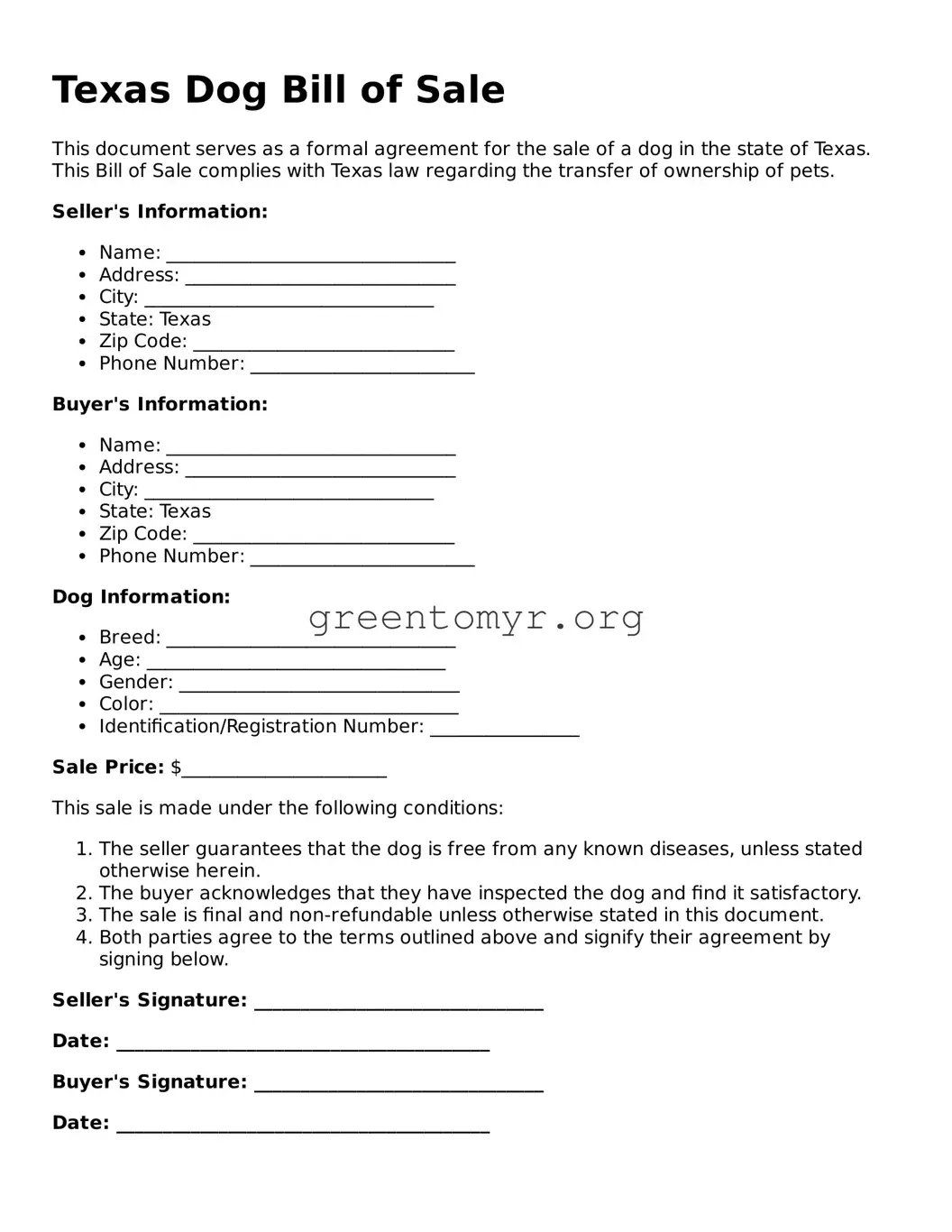Texas Dog Bill of Sale
This document serves as a formal agreement for the sale of a dog in the state of Texas. This Bill of Sale complies with Texas law regarding the transfer of ownership of pets.
Seller's Information:
- Name: _______________________________
- Address: _____________________________
- City: _______________________________
- State: Texas
- Zip Code: ____________________________
- Phone Number: ________________________
Buyer's Information:
- Name: _______________________________
- Address: _____________________________
- City: _______________________________
- State: Texas
- Zip Code: ____________________________
- Phone Number: ________________________
Dog Information:
- Breed: _______________________________
- Age: ________________________________
- Gender: ______________________________
- Color: ________________________________
- Identification/Registration Number: ________________
Sale Price: $______________________
This sale is made under the following conditions:
- The seller guarantees that the dog is free from any known diseases, unless stated otherwise herein.
- The buyer acknowledges that they have inspected the dog and find it satisfactory.
- The sale is final and non-refundable unless otherwise stated in this document.
- Both parties agree to the terms outlined above and signify their agreement by signing below.
Seller's Signature: _______________________________
Date: ________________________________________
Buyer's Signature: _______________________________
Date: ________________________________________
